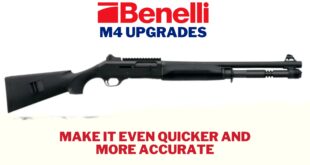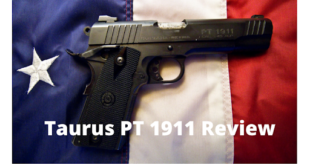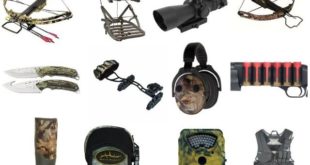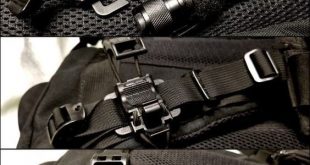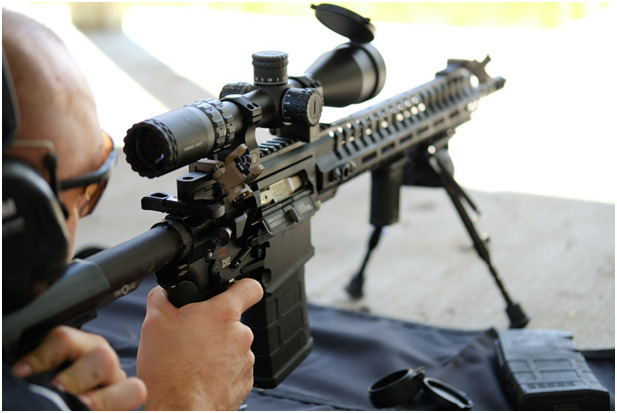
The AR-15 is the most popular semi-auto rifle in the country – likely the world. AR’s offer the consumer choice, balance, value, and versatility, all while championing that concept of America at its core. But the biggest reason for its popularity is that you can make it your own.
You can customize it until you run out of money or gain uncanny willpower. You can make it into something that no other AR owner has if you want to.
From the simplest AR conversion upper to the pick-every-piece custom build, made for a specific niche use case, the AR is the rifle that you look to when you want to build something special with your unique signature.
And the AR is approachable enough, without being a gunsmith, or even an armorer, that many, if not most people can build their own, safely.
Why is it so easy to build or customize? Because it’s modular and made to a specification that allows for drop-in components. Let’s dive a bit deeper – in this article the point is to uncover why the modular AR platform is so desirable and get your wheels turning.
Does the AR 15 equal Freedom? The Freedoms espoused in the concept of a modular build rifle
Choice trumps everything generally speaking, in the free market system. And America is all about freedom. We wrote it in the Constitution. We take every opportunity to espouse those rights, too.
Ask any American about freedom, and regardless of their place on the political spectrum, you’ll hear about the 1st or 2nd Amendment, or the 4th, or the 10th, or some other proof that it’s part of our DNA.
When you have a platform that allows you to decide, you are championing freedom. But with freedom comes great responsibility. That’s why websites like this, and articles like this, exist. Because no one wants to mess up an expensive AR build.
Or miss out on a piece of technology or a customized accessory that just hit the market or some configuration that makes incredible sense for their situation.
You can build it as your best friend built theirs. Or you can make their build look obsolete by comparison. It’s up to you, and your wallet. But ultimately the buck stops with you.
Who doesn’t want more choice, and constant evolution until perfection is reached?
The market evolves too. Once upon a time, there were conversion kits that didn’t run reliably when you dropped them on top of an AR lower. There once was only a single aftermarket trigger for the AR, in a sea of mass-produced mil-spec drop-in replacements made by military contract producers.
Once upon a time, the .50 Beowulf and the 6.5 Creedmoor, and the .300BLK didn’t exist. And while it’s hard to imagine a world where you don’t have cinder block destroying, car door-busting power in a compact carbine platform; or 1000+ yard tack-driving performance out of a 22-inch barreled AR, or whisper-soft muzzle exits from a .30 Cal, it was once his way.

And yet, the market isn’t perfect yet. Companies come and they go on a yearly basis. A few years ago, a bump stock was a thing. Now that company that made them is defunct for all intents and purposes – thanks to legislation.
While that doesn’t speak to freedom in the most absolute sense, it does speak to the ever-changing market and the importance of outside influences on the market for the AR and associated wares.
The industry seems big, but really, the power is consolidated into relatively few channels thanks to specialist companies doing their niche very well, and big companies knowing how to procure parts without taking on massive capital expenditure to thrive.
This balance of niche providers of superior products upon a backdrop of big power players that control huge segments of the AR market is what helps this dance along and keeps it consistently producing fans.
Until The Perfect Gun Becomes Obsolete by Innovation
While the AR is in no danger of becoming obsolete, it was once a firearm without such a great reputation. Early in its development after its release, the gun didn’t do quite as well as it was expected to. The dense jungles of Vietnam needed heavier bullets and more firepower to be successful in some parts. The gun was unpolished, had malfunctioned, and wasn’t the favorite of servicemembers using it.
Problems continued even into the 1980’s and 1990’s when the commercial viability of the platform seemed to waver, as companies like Olympic Arms and Bushmaster and DPMS had failures on several “innovative” concepts.
You used to be able to buy pistol caliber uppers that didn’t work out of the box and required heavy modification by gunsmiths who needed to tinker a lot with them to make them run.
You used to be able to buy three-round burst conversion kits in blister packs. The catalyst of the 1986 legislation (FOPA – a GCA of 1968 revision) and further, the push of 1994’s AWB, meant that the AR needed to redefine what it was and find a civilian market or else it was destined to go the way of the Garand, or maybe even the dodo.

It wasn’t until the upgrades that followed on the back of the M4 development program and a large number of military service people becoming civilians, that the platform caught any real market attention. But once manufacturers realized they could play off of the innovation driven by military contracts, they realized they didn’t have to be a mil-spec gun, they could be a gun built from mil-spec parts that could be assembled to be something more.
After all, if a basic armorer’s course in the military could teach all there was to know about building AR-15’s, then anyone could probably tinker with the gun to produce good results, so long as the reason for tinkering was presented to them.
But the market was ready to respond in a big way. A couple of years of unique and mostly novelty-driven concepts took it to the place where real innovators recognized the ability to plug into a system instead of having to conform to it.
Just as AR has risen to prominence, another innovative, market-desirable firearm platform could be developed to compete with it. And while it is unlikely, given the resources dedicated to the AR market, it certainly is possible. Legislation could drive innovation.
Ubiquity could drive innovation. New profit centers could drive innovation, but AR must keep one eye over its shoulder to stay in the lead as innovation is ever-present and comes out of the shadows when the market clamors for it.
Has The AR Hit Peak Innovation Yet?
There is more for the AR to achieve. It’s not a tired concept yet. You can say that the market is flooded with also-rans and copycats and lazy developers of products, but these companies don’t stay in business unless the market allows them to. They are selling products.
Whole buildings are dedicated to the AR it seems, in places like the NSSF’s Shot Show each year. Most of the headlines in mainstream media and all sorts of different gun-centric channels are inundated with AR-specific content.

Everybody who owns an AR is looking for the next killer app. Everyone who doesn’t yet own one but has an interest is just waiting for a catalyst to come along.
There are several years left in the growth cycle of subcategories for the AR, and by no means is this category dying.
What Can You Really Do and What Are Some Practical Realities of Modular AR Builds?
Here are some conceptual build types that once were not even possible, that can today, be made for a reasonable amount of money, a little time, and moderate effort (if not even bought off the shelf ready for action).
A suppressed home defense Carbine that offers a silent, compact solution to close-quarters combat
Example:
• Based on the .300BLK subsonic
• Using a tax stamp and a suppressor
• A short barrel (SBR) to help get around the house with ease
• A heads up optic with a red dot sight
• A custom flashlight on the shortened forend to ensure blackout capabilities so you can see the target but they cannot see you
• Collapsible stock of your choice, BUIS, and extended controls but otherwise minimalist in design
A super-accurate short OAL carbine that can do sub-MOA up to 350+ yards and uses a screaming fast, the highly performant new development cartridge

Example:
• Based on one of the following cartridges: .300 HAM’r; 6.5 Grendel; .224 Valkyrie
• Utilizes an under 18” barrel, and preferably a 16-inch barrel
• Uses a real glass optic to put you further out
• Suitable for hogs or other depredation, but can also be used on intermediate game targets like large deer
• Can accept a detachable bipod
• Has a precision lower build including a custom trigger and, full stock with adjustability
• Offers a full rail for monolithic optic mounting
A brush gun that mimics the fast follow-up shooting capabilities of a lever gun (the AR is faster of course) has an intermediate or large caliber cartridge and can shoot through impacted brush and deadwood environments.
Example:
• Based on one of the following cartridges: .450 Bushmaster; .350 Legend or .50 Grendel
• Utilizes a 16-inch barrel
• Capable of 2.5MOA at 200 yards
• Uses prominent, primary iron sights
• Offers 7-10 shots of potent energy delivering the cartridge
• Has a carry handle for when the terrain gets hard to sling-carry your weapon
• Can be used for more than just hunting
• Uses multiple mounting points for proper accessorizing
How Much Is This Going to Cost Me?
The above examples could range anywhere from 1k-4k depending on the quality of components and the market availability and pricing. Unfortunately, supply chain issues and overbought markets dictate higher prices for certain things.
But My Buddy Said It Only Cost Him $675 To Build His Dream AR
Your friend was lying. But that doesn’t mean you can’t get an amazingly utilitarian AR for that price point, and you can definitely build one for that price – but prepare to get hooked on modding your AR if you do.
Economies of scale really do pencil out for major brands and manufacturers. Yes, you can overpay for a name brand, but you’re also getting some built-in lean operational value from their ability to buy in bulk; assemble in stages, and write off capital expenditures.
You can also benefit from distributors and dealers who need to unload a rifle at a steep discount because of other factors.
A couple of important thoughts:
1. You can build for cheap and improve over time
2. You can also buy for cheap and improve over time
Sometimes, and this is especially true for newcomers to the AR game – sometimes the components needed to make a gun, for now, are what allows you to dream up what is to come. Sometimes starting on a budget is a very good idea.
This is also true because as you replace parts, you get spare parts that can help maintain and further modify your guns on a modular AR build.
We’re Sorry but This Modular Improvement Virus Never Goes Away
Now that you know what your next angle is, in the AR space, we must inform you: once you have caught the bug it never goes away. Prepare to constantly be on the lookout for deals; read more blogs than you intend to and go down the rabbit hole on social media platforms and browsing through manufacturer websites.
Once you have an itch in the AR space, you can never quite get the scratch that satisfies – it’s a sickness that many are afflicted with, though; and you’ll be in good company.
 www.GunsandOptics.com Tactical & Hunting Gear Review
www.GunsandOptics.com Tactical & Hunting Gear Review


